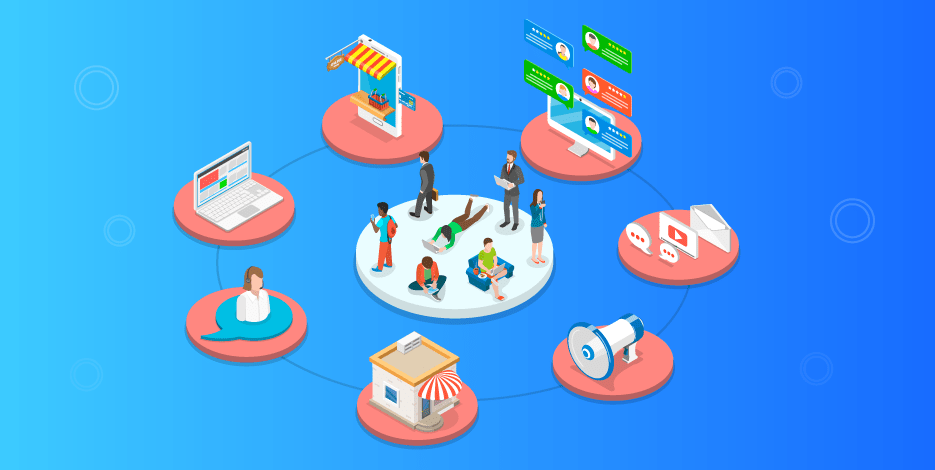Digitalization is at the height of its popularity in today’s era. Now more than ever, consumers rely heavily on e-commerce sites or mobile applications to search for products, access service information and make purchases. This is why an e-commerce business must have creative, trustworthy, and up-to-date product information as a means to inform, educate, and engage with the customers.
What is Omnichannel?
Omnichannel is a marketing strategy that has the end goal to exploit every channel available and provide a consistent service and branding approach to engage with customers through a 360-degree shopping experience. Omnichannel can make or break your business. Businesses that have not utilized omnichannel retail are at risk of losing market share and sales.
Advantages of Omnichannel Marketing
Businesses that have multiple selling channels can make more profit compared to those that have very little. It is online shopping’s speed, convenience, and accessibility that made physical stores or ‘single-selling channels’ irrelevant given the technological climate. However, consumers are not aware of all the affiliated channels of an e-commerce business; all they really expect and want from companies is that they indulge their demands whenever and wherever they want. It is a guaranteed lost in sales when your customers can’t access the channels they prefer; this will also affect future transactions with you. Omnichannel marketing solves all those issues, whether in-store or online – omnichannel addresses it all.
There are different challenges that an e-commerce business faces every day. However, regardless of it, customers require and expect quality service and e-commerce customer support services across all channels from the website, mobile application, and in-store. However, only a few e-commerce businesses can claim that they have a consistent, smooth experience all over their channels. Obstacles that e-commerce businesses encounter in developing an omnichannel multiply when networked on a global scale, especially when new processes, currencies, and languages enter the equation.
Omnichannel marketing is about making all of the pieces fit together effortlessly for your customers.
Creating an Omnichannel Experience
Understanding your customer’s needs is the first step in creating a perfect omnichannel experience for them. Which would mean you have to identify which platforms your customers flock to regularly shop, how they shop with other brands across the platform, and how often they shop online. The data gathered about your customer’s shopping behavior will help you touch the right points and strengthen them to devise a smooth-sailing shopping experience. Furthermore, this will also help you determine the issues that customers experience and set up an effective solution.
Create a Plan
It is essential to understand your customers’ favored channels and their behavior across all these channels to design a strategy on how you want the flow to run across all platforms.
Personalize the Experience
As soon as you have gathered the data, you can easily categorize your customers based on their behavioral patterns on social media. This will give each of your customer a personalized experience with your brand.
Specify the Context
Participating in all platforms doesn’t mean that you immediately have an effective omnichannel strategy. It all boils down to context. Sending the wrong information to your customers might discourage them from engaging with you. To create an excellent omnichannel strategy, ensure that every message you deliver is relevant to the customer. Send it to them through a channel they participate most, and during the time they are most active.
Choose the Right Tools
Choosing the right tools is critical to maximizing your omnichannel strategy. Conduct research starting from the conceptualization down to the implementation and afterwards formulate an analysis. This way, it can help you weigh your options and decide which tools to use.
Train Your Team
Remind your team to always have a customer-centric outlook when handling business. No matter how expensive your tools are or how smart your strategy is, if your team don’t treat your customers right, they will surely backtrack one way or another.
Omnichannel, Multichannel, and Cross-Channel Marketing
Often, these terms are used synonymously. After all, these are the same strategies that focus on keeping and gaining customers. However, there is a thin line that stretches out among the three. In multi-channel marketing, all channels used work independently without any connection with the others. In cross-channel marketing, there are selected channels that work interdependently.
On the other hand, omnichannel is a lot more consolidated and works harmoniously as opposed to the other two. It ensures that customer experience is consistent in all platforms through transparency. From the owner’s point of view, it provides centralized data management by synchronizing the existing channels regardless if they have a shared inventory strategy or employ a separate inventory allocation.
Hence, at its central core, omnichannel marketing upholds customer-centricity, and that means providing quality e-commerce customer support services. To elaborate more on that, to optimize customer experience is to think like your customers. It mainly targets long-term shoppers and focuses more on customer profitability and not just sales growth. This might require you and your team to push more in your technical and marketing expertise and collect all data that are needed to make a successful omnichannel campaign. It is only going to help you develop a better customer experience.
Ready to Outsource E-commerce BPO Solutions?

Get a free quote here.


